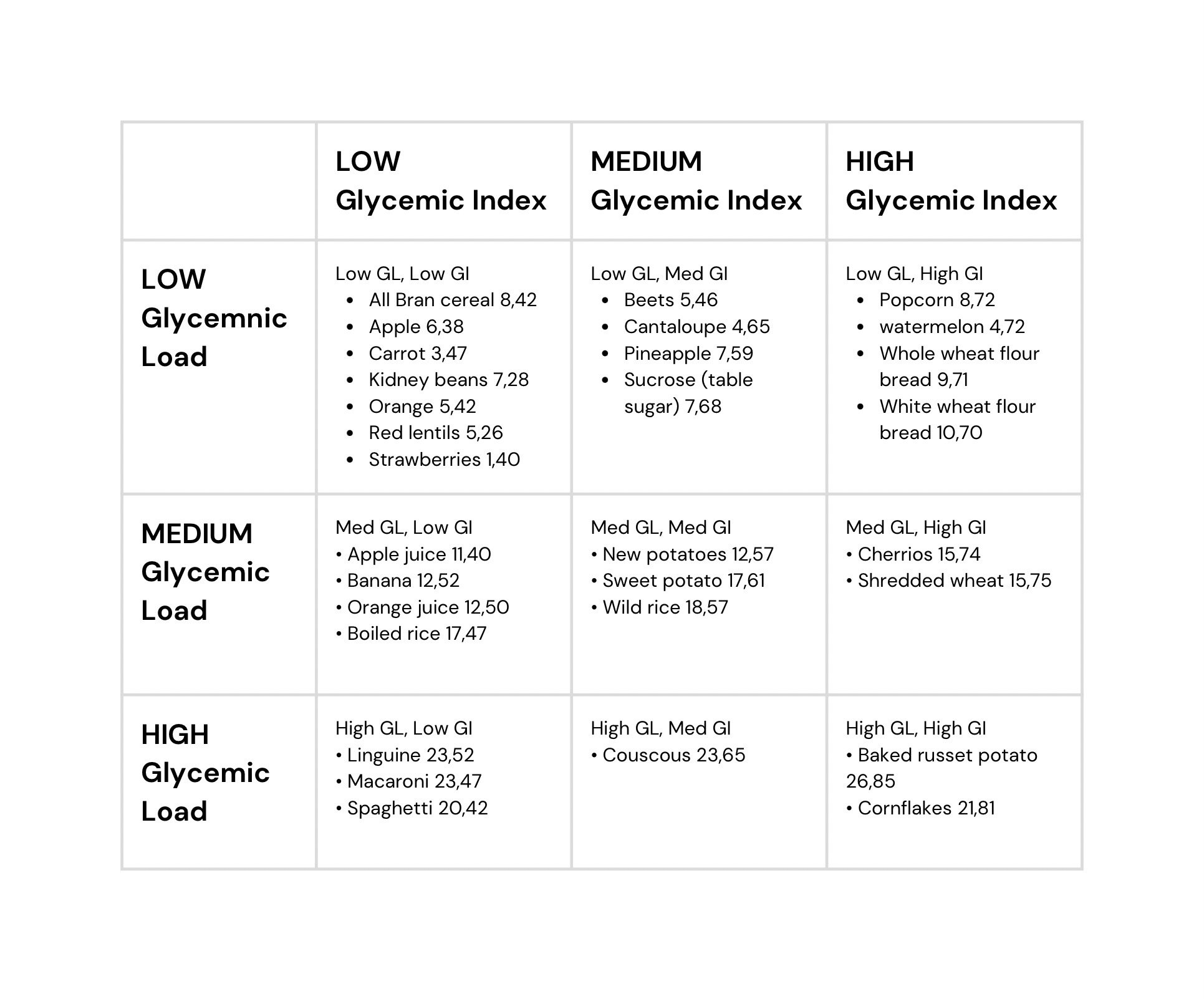Optimizing Carbs for Performance: Part 2
Now that we understand the importance of carbohydrates and glycogen, let’s break down the timing.
Carbohydrates Before Meals
Carbohydrates before exercise help prevent the onset of fatigue and reduce hyper-acidity in the gastrointestinal system. It is recommended to eat 30-60 g of carbohydrates that have a moderate glycemic index 2-3 hours before exercise. A 2:1 ratio or 1:1 ratio of carbohydrates to protein is recommended at this time. A 1:1 ratio is optimal for body builders and the 2:1 ratio is more ideal for endurance athletes. Along with this carbohydrate and protein meal, it is ideal to consume a moderate amount of fiber and 500-1000mL of fluids (ideally water).
Carbohydrates During Endurance or Interval Activity
The purpose of consuming carbohydrates during exercise is to help delay the onset of fatigue, to maintain hydration (for every 1lb lost during exercise, you need 16 oz fluid to replace it), and to control thermoregulation. It is optimal to consume 1/2 to 1 cup of fluid for every 15 minutes of activity. For activity that lasts more than 60 minutes, it is critical to consider a 6-10% carbohydrate solution (aka a sports beverage with electrolytes and simple carbohydrates). This is especially important for endurance athletes such as dancers practicing for extended hours. An ideal sports beverage is a 6 –10% carbohydrate solution, with the carbohydrate being in the form of glucose polymer, maltodextrin, or sucrose for optimal absorption. Avoid ones with high fructose corn syrup or glycerol. It is also important these beverages have electrolytes to aid with rehydration. Electrolytes are the minerals in your body such as sodium and potassium.
Tip: Create your own sugar and electrolytes beverage to consume during endurance exercise. The recipe is 1000 ml water, 60 ml (5 Tbsp) honey or sugar with 1⁄4 tsp sea salt.
Carbohydrates After Exercise
As discussed earlier, the function of carbohydrates after exercise is to replenish and saturate muscle glycogen stores for the next exercise bout. Within the two hour window after exercise, the activity of the enzyme glycogen synthase is elevated (as the name states, glycogen synthase synthesizes glycogen from glucose). This allows for an increased capacity for optimal muscle and liver glycogen replenishment. Although the processes for glycogen supercompensation are most active within the two hours post exercise, there is elevation for up to 48 hours after. An ideal meal post exercise is a high glycemic index fruit, sweetened almond milk, and protein powder. Within the first 30 minutes post exercise you should consume 15-30 g of a high glycemic carbohydrate or a more concentrated sports beverage (ie 10%). Studies have shown that the greatest glycogen repletion is within a two hour window and a post exercise meal that is 100 g of carbohydrates and 40 g of protein. Along with this, adequate water and electrolytes intake post exercise is critical for preventing dehydration and electrochemical imbalances.
The goal with supercompensating glycogen stores is for athletes to enhance their endurance and performance during their subsequent athletic events. Having higher glycogen levels can delay fatigue, improve muscle function, and provide a readily available energy source for prolonged exercise.
It's important to note that the optimal timing and duration of the depletion and loading phases may vary depending on individual needs and physiological differences, the athlete, their specific sport, and their training regiment. Athletes often work with sports nutritionists, dietitians, or naturopathic doctors to create personalized glycogen supercompensation strategies tailored to their training and competition schedule.
*This is not medical advice and is only intended for educational purposes only. Please always consult your medical doctor, naturopathic doctor, chiropractor, or preferred health care practitioner prior to beginning any treatment*
Note on Glycemic Index:
To best utilize this nutritional knowledge it is important to understand two terms; glycemic index (GI) and glycemic load (GL). The glycemic index (GI) is a numerical system of measuring how much of a rise in circulating blood sugar a carbohydrate triggers. The higher the number, the greater the blood sugar response. A low GI food will cause a small rise, while a high GI food will trigger a dramatic spike.
A GI of 70 or more is high, 56 to 69 is medium, and 55 or less is low.
The glycemic load (GL) is a relatively new way to assess the impact of carbohydrate consumption that takes the glycemic index into account but gives a fuller picture than glycemic index alone. A GI value only tells you how rapidly a particular carbohydrate turns into sugar. It doesn't tell you how much of that carbohydrate is in a serving of a particular food. You need to know both things to understand a food's effect on blood sugar. Let’s use watermelon as an example. Watermelon has a high GI, but there isn't a lot of it, so watermelon's glycemic load is relatively low. A GL of 20 or more is high, 11 to 19 is medium, and 10 or less is low.
References
Brody T. Nutritional Biochemistry. 2nd ed. Academic Press; 1999.
Bendich A and Deckelbaum RJ. Preventive Nutrition: The comprehensive guide for health professionals. Humana Press; 2005.
Groff JL et al. Advanced Nutrition and Human Metabolism 2nd ed. West Publishing Company; 1995. NATUROPATHIC CLINICAL NUTRITION
Gaby AR. Nutritional Medicine: a textbook. 2010
Shils ME et al. Modern Nutrition in Health and Disease. 10th ed. Lippincott Williams and Wilkins; 2005.
Werbach MR. Textbook of Nutritional Medicine. Third Line Press, Inc.; 1999.

